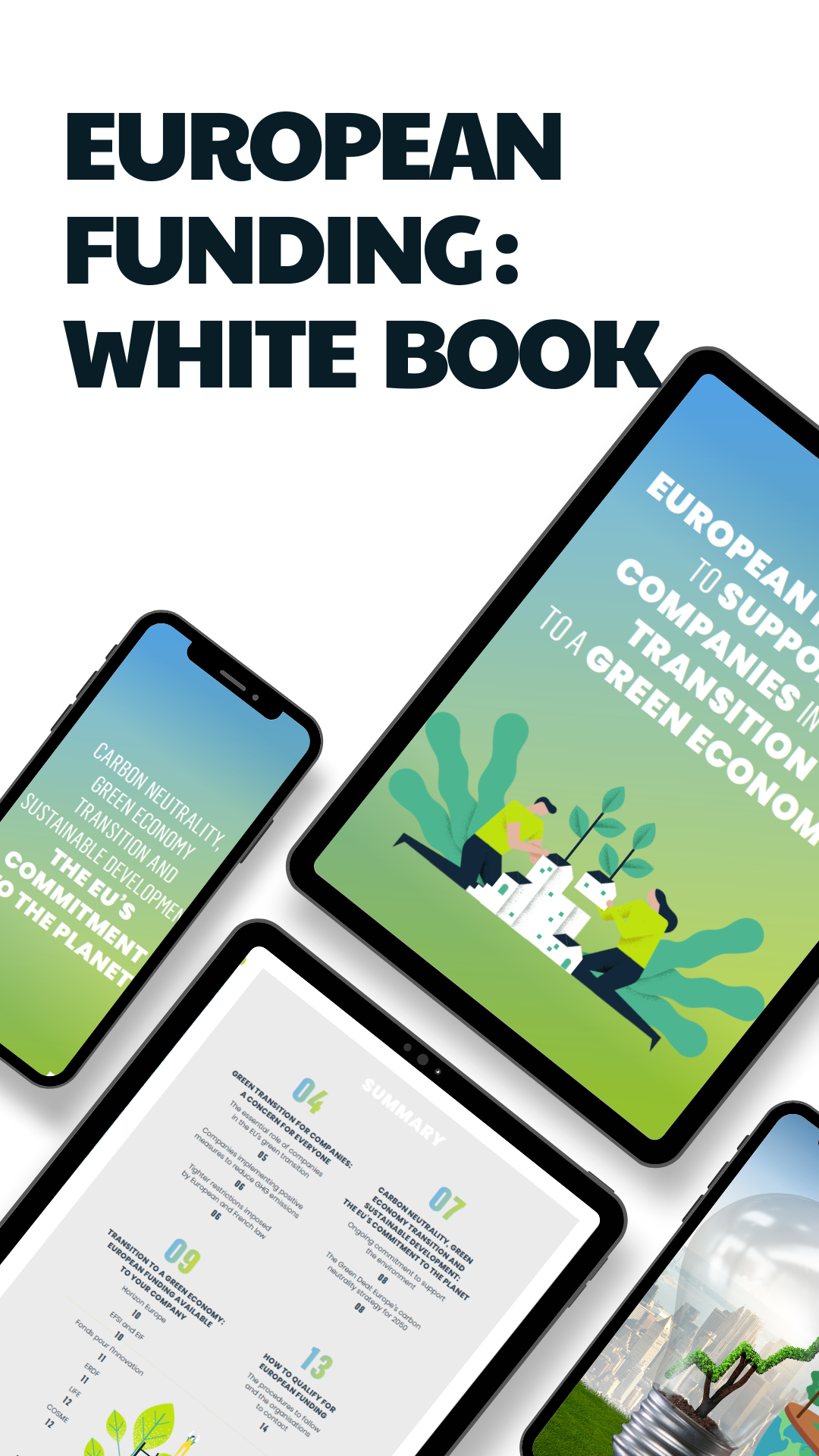In its latest global assessment, the IPBES (Intergovernmental Science-Policy Platform on Biodiversity and Ecosystem Services) showed that human activity has already altered 75% of terrestrial environments and 66% of marine environments. It also revealed that about a million species of animal and plant species – out of the eight million known – are now endangered(1). The organisation calls for “urgent collective effort to bring lasting change.” Because of the pressure they exert and the impact they bring, businesses are one of the causes behind this erosion of biodiversity, yet they can be a solution too.
The role played by biodiversity is vital as its ecosystem services bring a number of benefits: regulation, supplies, cultural services and support services. The erosion of biodiversity is due to five main factors: changes in how the sea and land are used, over-exploitation of natural resources(2), climate change, pollution (solid, liquid, and gaseous, but in addition noise and light pollution) and the introduction of invasive exotic species.
An interdependent relationship
Businesses depend on many of the services that biodiversity offers, relying on the harnessing of the natural environment’s materials, energy, water and soils in order to pursue their activities. These also impact on their production sites and through their products – both during use and at the end of their life cycle. All these effects and pressures combine to form a company’s biodiversity footprint.
Contrary to a carbon footprint however, which can be measured with a single indicator (the tonnage of CO2 produced), the biodiversity footprint can be measured with a number of indicators, not just numerical but also variable in nature. This makes comparisons harder and makes applicable measures and actions all the more difficult to determine. In mid-May, CDC Biodiversity and its B4B+ club launched the Global Biodiversity Score, a tool for measuring impact on biodiversity, after five years of development and critical evaluation. Another particular characteristic of the biodiversity footprint is that many of the impacts on biodiversity do not happen in the country in which a product is consumed, but rather through imports, the most obvious example being imported deforestation(3).
Although all economic sectors have biodiversity impacts, some are greater than others. That is why in a recent report on the topic(4) Plateforme RSE, a French forum for corporate social responsibility, focused on agrifood, construction & materials, chemicals and energy. The report analyses how different companies incorporate their biodiversity footprint within their non-financial reporting. It also presents a range of best practices and puts forward a series of recommendations. In agrifood – or cosmetics, another sector that relies heavily on biodiversity – the approach is mainly risk-based. This doesn’t apply to the construction and development sectors, already governed by specific standards and regulations.
The role of companies
According to CDC Biodiversité, “40% of the global economy relies on nature’s services, many of which are endangered by the erosion of biodiversity”. The World Economic Forum has become aware of this and ranks biodiversity erosion and climate change among the top five threats to humanity. But if biodiversity erosion is such a serious threat to business activity, then what are companies actually doing to avert it? Should they limit themselves to the absolute minimum necessary for production or commit to taking a much broader approach?
Given the twenty Aichi Biodiversity Targets set in 2010 as part of COP 10 on biodiversity in Nagoya, companies have two options: they can integrate biodiversity within their operations to reduce their pressure on ecosystems, and/or they can apply financial resources.
Avoiding, Reducing, Offsetting: a simple formula
In 2012, the French Ecology Ministry introduced the “avoiding, reducing and offsetting” formula, a principle to be applied to any local biodiversity-related economic development plan in France. According to this principle, companies and other stakeholders in the economy should prioritise taking steps to prevent their activities impacting on ecosystems (actions to preserve the environments they rely on). If they are unable to do so, they must make every effort to minimise any impact. If neither of these options (prevention or minimising) is possible for them, they should apply offsetting measures as a last resort. One of this scheme’s pitfalls is that any offsetting programme should last the duration of the planned development or structure. Take for example the construction of a bridge with an estimated lifespan of sixty years; any planned offsetting should then also last sixty years …
As regards the use of financial resources, CDC Biodiversité estimates that funds earmarked for protecting biodiversity stand today at $50 billion per year (three-quarters of which are publicly funded) when in reality, at least $150 billion would be needed. Businesses can pursue support schemes such as partnerships, awareness-raising campaigns, training courses or research projects. These could for example involve reforestation, or reintroducing species of wildlife. However, impact studies, inventorying and mapping are not taken into account as strict application of the regulation excludes these.
Orée: a pioneer in biodiversity and economy
One of the first to address biodiversity through the lens of economic development was the Orée association. As early as 2008, Orée published a now often-referenced publication: La Biodiversité dans les stratégies des entreprises : le bilan biodiversité des organisations (“Biodiversity in Business Strategy: The Biodiversity Accounts of Organisations”). Since then, its dedicated working group has been releasing publications and organising key events and because of its expertise, Orée is regularly consulted for developing strategies and legal texts. It coordinates and leads La Plateforme de l’Initiative Française pour les Entreprises et la Biodiversité (www.entreprises-biodiversite.fr), a French forum for biodiversity and business, one of whose purposes is to leverage the experience gained by others. It formed part of the Act4Nature steering committee, an initiative launched mid-2018 by EpE (a French business group for the environment), AFEP (an association of large private French companies) and MEDEF (a French employers’ union). This initiative is now called “Entreprises engagées pour la nature – Act4nature France”. This year, Orée has published Initiatives de prise en compte de la biodiversité par les entreprises aux niveaux mondial, européen et national (“Business Initiatives for Taking Biodiversity into Account Nationwide, Europe-Wide and Worldwide”) and has joined the biodiversity challenge organised by Engage, a community of experts, with a view to “turning ten average businesses into biodiversity pioneers.”
The main difficulty for a business with respect to biodiversity is deciding where to focus its efforts. For example, imagine a company seeking through ecodesign to reduce the use of raw materials: should it incorporate this initiative into specific concrete action to limit its biodiversity footprint, or into the company’s broader approach to the circular economy?
Is There a Link Between Biodiversity and Pandemics?
Speculation is rife about how today’s pandemic began. Was it passed on directly, indirectly, or through genetic recombination? We should allow scientists to do their work and put these questions into perspective. One thing we can observe however is that the number of epidemics linked to zoonoses (diseases passed from animals to humans) has been growing over the past fifty years. Over the same period, we have accelerated our destruction of the natural habitats (especially forests) that are home to many species. This has resulted in species being brought together that had previously never mixed. Ever higher globalised trade has added to this phenomenon, as have new agricultural practices (particularly animal rearing), together with poaching and the wild animal trade. From 27 to 31 July, the IPBES will be hosting a workshop on the relationship between biodiversity and pandemics. Twenty experts chosen from different fields will work together on this virtual platform. They will produce a report that will be peer-reviewed for publication in September. So watch this space…
- “Global Assessment Report on Biodiversity and Ecosystem Services”, Intergovernmental Science-Policy Platform on Biodiversity and Ecosystem Services (IPBES), May 2019, https://ipbes.net/
- Over 60 billion tons of renewable and non-renewable resources are extracted worldwide each year, up by around 100% since 1980 (IPBES).
- Examples of raw materials from deforestation include soya, palm oil, cocoa, beef, leather, wood, paper pulp and natural rubber.
- The paper “Empreinte biodiversité des entreprises” (“Businesses’ Biodiversity Footprint”), Plateforme RSE, France Stratégie, Sylvain Boucherand et al., January 2020, https://www.strategie.gouv.fr/sites/strategie.gouv.fr/files/atoms/files/fs-rse-avis-empreinte-biodiversite-entreprises-mars-2020_0.pdf




